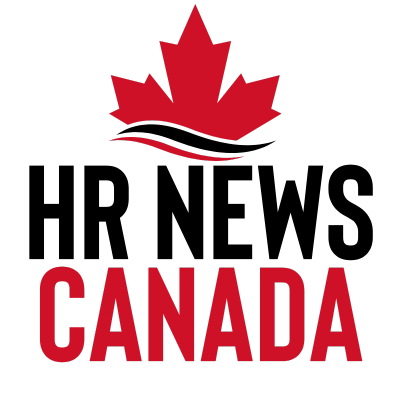In 2025, HR is more critical than ever, and we’ve put together a list of seven HR functions that every small business and nonprofit should prioritize. Plus, we’ve included 17 free HR resources to help you tackle these challenges!
Free Resources Included:
- Termination Policy Template
- Offboarding Checklist
- Compliance Checklist 2025
- New Hire Onboarding Checklist
- Performance Improvement Plan
- Warning Letter Template
- Employee Absence Tracker
- Protected Leaves Policy
- Functional Abilities Form
- Medical Consent Form
- Compensation Policy
- Employee Benefits Policy
- Continuation of Benefits Coverage Letter
- Wage Adjustment Letter
- Vulnerable Sector Behaviour Management Policy
- Webinar Recording: Managing Sick Leaves and the Importance of Medical Documentation
- Webinar Recording: Disability Management and Claims Handling
DOWNLOAD 17 FREE HR RESOURCES!
1. Termination and Offboarding
Let’s start with the tough part: letting an employee go. Whether it’s for performance issues or the end of a contract, handling terminations properly is essential to protect your business or nonprofit. Poorly managed terminations can lead to legal problems, reputational damage, and decreased morale.
Best Practices:
- Create a clear, written termination policy that complies with local labour laws.
- Keep termination documents up to date—laws change frequently.
- Conduct exit interviews for valuable feedback.
- Remember the basics: collect keys, revoke system access, and ensure proper documentation.
2. Labour Law Compliance
No matter your organization’s size or industry, staying compliant with labour laws is crucial. Nonprofits and small businesses alike often struggle with ever-changing regulations. Fines and penalties can be steep, and non-compliance can leave your team vulnerable.
Best Practices:
- Stay up to date on changing labour laws in your province.
- Organize and maintain detailed records—it’s easier to stay compliant when everything’s in order.
- Conduct regular audits of your policies and processes.
3. Recruitment and Onboarding
The right people are your biggest asset, but finding them can be challenging. Whether you’re hiring full-time staff or bringing on volunteers, it’s important to attract candidates who not only have the skills but also align with your mission.
Best Practices:
- Write job descriptions that clearly reflect your organization’s values and needs.
- Use social media and specialized job boards to cast a wide net.
- Set up an organized onboarding process that helps new hires feel welcome and prepared.
4. Performance Management
Performance management isn’t just about addressing issues when they arise—it’s about keeping your team on track and engaged. Regular feedback, clear goals, and performance reviews help create an environment of growth and accountability.
Best Practices:
- Set measurable goals that are specific and achievable.
- Schedule regular performance reviews to discuss progress and provide feedback.
- Foster a culture of feedback where employees feel supported in their growth.
5. Managing Leaves and Absenteeism
From personal time off to sick days, managing employee absences is a delicate balance. For small businesses and nonprofits, unexpected absences can have a significant impact.
Best Practices:
- Have a clear leave policy in place that defines eligibility and processes.
- Comply with protected leave laws and document medical leaves.
- Ensure your managers are trained to handle requests fairly and with compassion.
- Track absences and leave balances with tools like our Excel-based tracker.
6. Compensation and Benefits
Paying employees fairly is essential for retaining top talent—whether you’re a small business or a nonprofit. A competitive compensation package, including benefits and perks, shows your team that they’re valued. A transparent pay structure also helps minimize turnover.
Best Practices:
- Stay competitive by regularly reviewing industry pay standards.
- Offer a mix of monetary compensation and additional perks like flexible hours or wellness benefits.
- Be transparent about pay and benefits.
7. Managing Volunteers, Seasonal Workers & Independent Contractors
Not everyone on your team is a full-time employee—and that’s especially true for small businesses and nonprofits. You might rely on volunteers and seasonal workers, bring in help during busy periods, or outsource certain roles to independent contractors. Each group brings value, but they also come with unique HR and compliance needs. If not handled properly, misclassification or lack of structure can lead to legal issues or disengagement.
Best Practices:
- Define roles clearly
- Have proper agreements in place
- Train and onboard like you would employees
- Track time and performance
- Show appreciation
The Bottom Line
Whether you’re a small business owner or nonprofit leader, these seven HR functions will help ensure that your team is motivated, compliant, and working together toward your mission. And with the free resources provided, you’ve got the tools you need to tackle HR like a pro!
About HR Covered:
At HR Covered, we understand that small businesses and nonprofits have unique HR needs. We’re here to support you with everything from HR compliance and legislative training to documentation, health & safety, legal support, consulting, and outsourcing. Ready to make HR easier? Visit www.hrcovered.com or give us a call at +1 866-606-0149.





